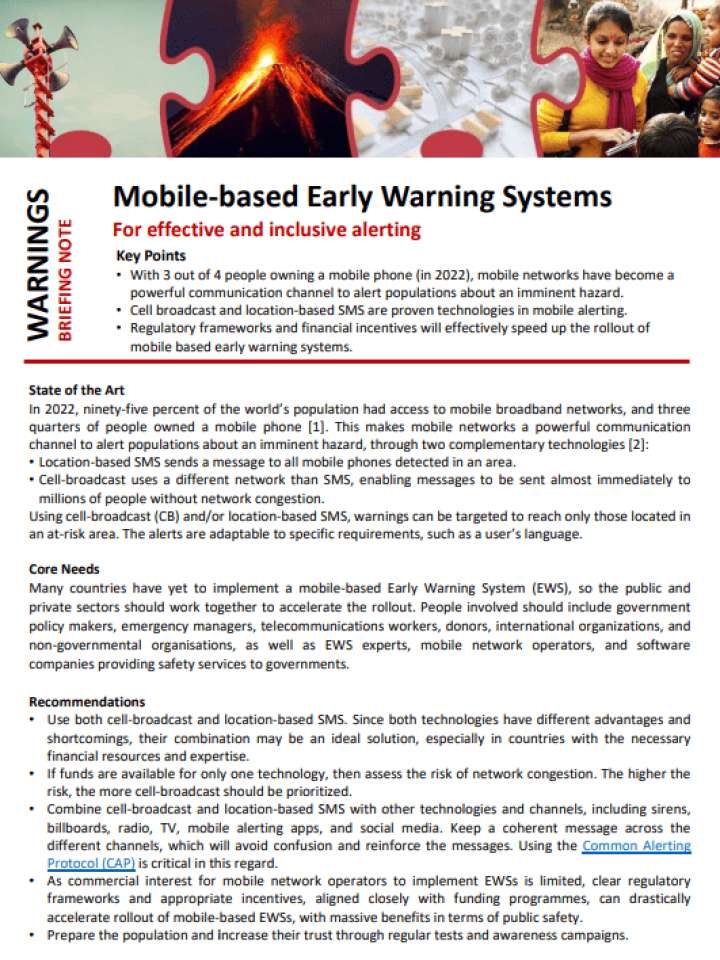Mobile-based early warning systems: For effective and inclusive alerting
This briefing note accesses mobile-based early warning systems as an effective and inclusive alerting system. In 2022, ninety-five percent of the world’s population had access to mobile broadband networks, and three quarters of people owned a mobile phone. This makes mobile networks a powerful communication channel to alert populations about an imminent hazard, through two complementary technologies: (1) Location-based SMS sends a message to all mobile phones detected in an area, and (2) cell-broadcast uses a different network than SMS, enabling messages to be sent almost immediately to millions of people without network congestion.
Many countries have yet to implement a mobile-based Early Warning System (EWS), so the public and private sectors should work together to accelerate the rollout. The following points should be taken into account:
- Use both cell-broadcast and location-based SMS. Since both technologies have different advantages and shortcomings, their combination may be an ideal solution, especially in countries with the necessary financial resources and expertise.
- If funds are available for only one technology, then assess the risk of network congestion. The higher the risk, the more cell-broadcast should be prioritized.
- Combine cell-broadcast and location-based SMS with other technologies and channels, including sirens, billboards, radio, TV, mobile alerting apps, and social media. Keep a coherent message across the different channels, which will avoid confusion and reinforce the messages. Using the Common Alerting Protocol (CAP) is critical in this regard.
Explore further
